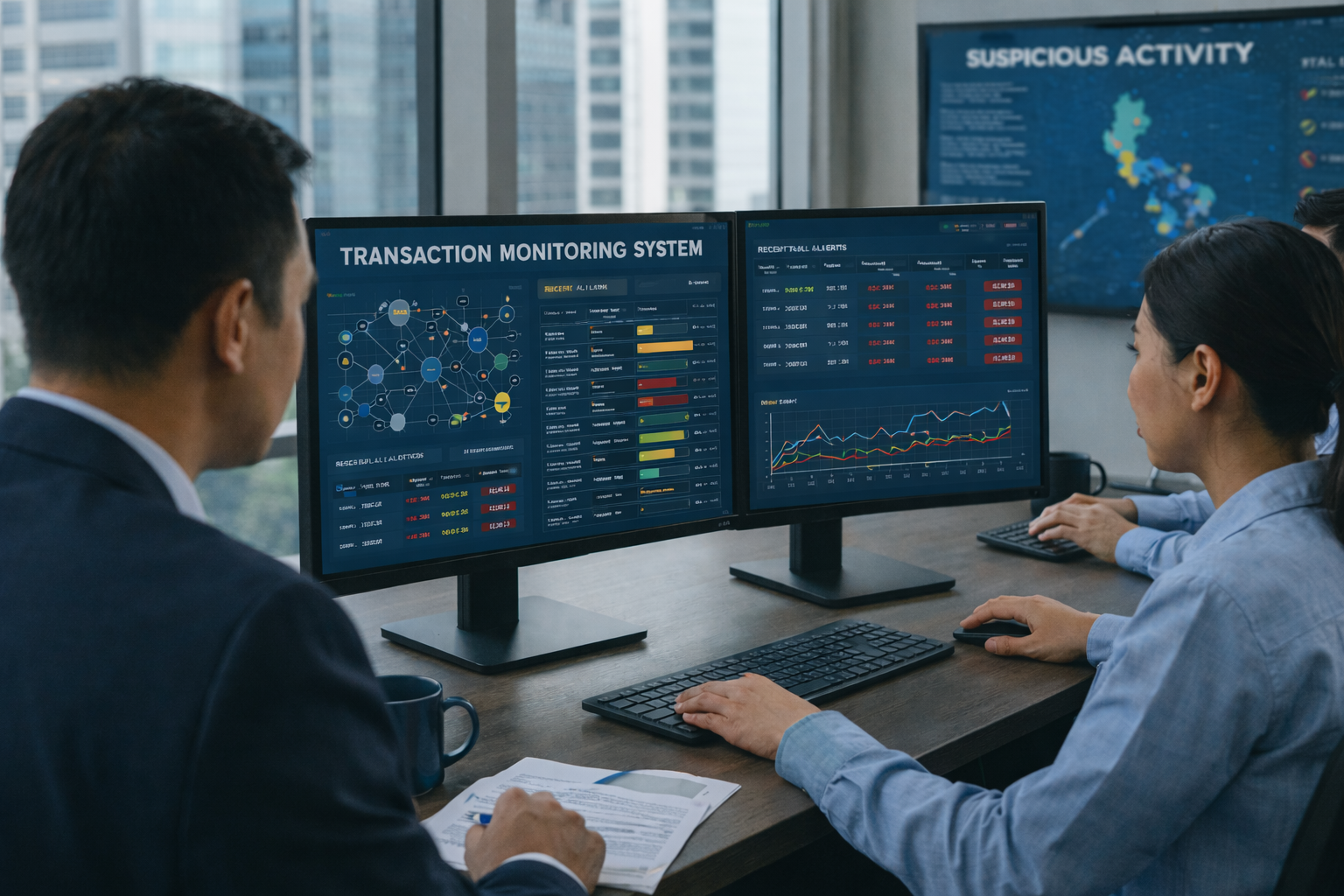Building an Effective AML Risk Rating System: Best Practices
.svg)
In today’s financial landscape, effectively assessing and managing AML risk is crucial for institutions striving to combat money laundering and terrorist financing. AML risk rating systems and scoring models provide a structured approach to evaluating potential risks associated with customers and transactions, ensuring that resources are allocated efficiently and compliance efforts are prioritized. These tools are indispensable for developing a comprehensive AML risk assessment framework, which not only meets regulatory requirements but also enhances an institution’s ability to identify and mitigate financial crime.
In this blog, we will explore the key elements of an effective AML risk rating system and discuss how innovative solutions like Tookitaki’s can transform your organization’s approach to AML compliance.
Understanding AML Risk Scoring and Its Importance
Anti-Money Laundering (AML) risk scoring is a critical process that helps financial institutions evaluate the risk levels associated with their customers and transactions. By systematically analyzing various risk factors, such as customer profile, geographical location, and transaction patterns, institutions can assign risk scores that reflect the potential for involvement in money laundering or terrorist financing activities. These scores enable organizations to categorize customers into different risk tiers, ensuring that those posing higher risks receive more stringent scrutiny through enhanced due diligence (EDD) procedures.
The importance of AML risk scoring lies in its ability to provide a clear and structured approach to risk management. Without an effective risk scoring system, financial institutions could either overlook high-risk customers or overburden low-risk customers with unnecessary compliance checks. A well-designed AML risk scoring model not only helps in regulatory compliance but also enhances operational efficiency by focusing resources on the most significant threats, thereby reducing the chances of financial crimes slipping through the cracks.
{{cta-first}}
AML Risk Assessment Framework: A Comprehensive Approach
An AML risk assessment framework is essential for financial institutions to systematically identify, measure, and mitigate risks associated with money laundering and terrorist financing. This framework involves evaluating various risk factors such as customer demographics, geographic locations, products and services offered, and the channels through which transactions are conducted. Each of these factors contributes to the overall risk profile of the institution, which is crucial for determining the level of scrutiny required for different customers and transactions.
Implementing a comprehensive AML risk assessment framework involves several key components. First, institutions must conduct an Enterprise-Wide Risk Assessment (EWRA) to understand the inherent risks associated with their business model, customer base, and operational geography. This assessment provides a holistic view of the institution’s risk landscape and sets the foundation for developing individual customer risk scores. Next, the framework should include robust data collection and analysis processes to ensure that all relevant information is captured and assessed accurately. Finally, institutions must establish clear policies and procedures for ongoing monitoring and reassessment of risks, ensuring that the framework remains effective in the face of evolving threats.
This structured approach not only ensures compliance with regulatory requirements but also empowers institutions to proactively manage risks, protecting both the organization and its customers from potential financial crimes.
Future Trends in AML Risk Scoring and Assessment
The landscape of Anti-Money Laundering (AML) compliance is continuously evolving, driven by advancements in technology and the increasing sophistication of financial crimes. One of the most significant trends shaping the future of AML risk scoring is the shift toward dynamic and real-time risk assessment models. Traditional static models are giving way to more flexible systems that can adapt quickly to new information, allowing financial institutions to stay ahead of emerging threats.
Dynamic risk scoring, powered by AI and machine learning, is becoming the standard for modern AML compliance. These models continuously analyze and learn from new data, enabling them to detect patterns and anomalies that may indicate suspicious activities. As financial transactions become more complex, especially with the rise of digital currencies and cross-border transactions, the ability to update risk assessments in real time is crucial. This ensures that financial institutions can respond immediately to potential risks, rather than relying on outdated data or manual processes.
Another trend is the integration of advanced technologies such as blockchain and big data analytics into AML frameworks. Blockchain’s immutable ledger offers transparency and traceability, which are valuable for monitoring high-risk transactions and ensuring compliance. Meanwhile, big data analytics allows for the processing of vast amounts of transactional data, identifying risks that might otherwise go unnoticed. These technologies, combined with AI-driven dynamic scoring models, provide a robust framework for managing AML risks in an increasingly digital financial environment.
Regulatory expectations are also evolving, with a growing emphasis on the need for continuous monitoring and real-time reporting. Financial institutions are expected to adopt systems that can provide regulators with up-to-date risk assessments and demonstrate proactive measures in mitigating financial crime risks. This shift is pushing institutions to invest in advanced AML solutions that not only comply with current regulations but are also adaptable to future regulatory changes.
As these trends continue to shape the future of AML compliance, financial institutions must stay informed and agile. Adopting advanced solutions like Tookitaki’s Customer Risk Scoring can help institutions not only meet regulatory requirements but also maintain a strong defense against the ever-changing landscape of financial crime.
Enhancing Your AML Risk Management with Advanced Solutions
Traditional AML risk-scoring models often struggle to adapt to the dynamic nature of financial crime, leading to inefficiencies and increased risk. These static models can fail to capture emerging threats and may result in either missed risks or overwhelming false positives. To address these challenges, Tookitaki’s Customer Risk Scoring Solution offers a transformative approach by leveraging advanced machine learning and real-time analytics to deliver dynamic and accurate risk assessments.
Tookitaki’s solution provides a 360-degree customer risk profile by analyzing multiple dimensions such as demographics, geography, and transactional patterns. This holistic view is enhanced by a pre-configured rule engine with over 160 rules, alongside unsupervised and supervised machine learning models, ensuring that each customer receives an accurate risk score tailored to their unique profile. The system’s dynamic risk engine further refines these scores by comparing customer behaviour with both historical data and peer behaviour, offering a more nuanced and precise risk assessment.
{{cta-ebook}}
One of the standout features of Tookitaki’s Customer Risk Scoring Solution is its ability to perform continuous, event-driven risk monitoring. This automated system triggers reassessments based on changes in customer behaviour, ensuring that risk profiles are always current and reflective of the latest data. Additionally, real-time APIs enable instant risk scoring during onboarding, helping institutions make safer and more informed decisions quickly. The solution also includes a network visualization feature, allowing institutions to identify and understand complex relationships and hidden risks within their customer base.
By integrating these advanced capabilities, Tookitaki’s Customer Risk Scoring Solution not only reduces non-compliance risks but also streamlines due diligence processes, enabling financial institutions to focus resources on genuine threats while maintaining robust compliance in a constantly evolving landscape.
Final Thoughts
As financial crimes become increasingly sophisticated, the importance of a robust and dynamic AML risk management system cannot be overstated. Traditional models are no longer sufficient to address the complexities of modern financial transactions and the evolving tactics of money launderers. By adopting advanced solutions like Tookitaki’s Customer Risk Scoring, financial institutions can significantly enhance their ability to detect and mitigate risks in real time.
Tookitaki’s solution offers a comprehensive approach to AML compliance, providing a 360-degree risk view that continuously adapts to new data and emerging threats. With features like dynamic risk scoring, real-time APIs, and automated event-driven monitoring, Tookitaki’s Customer Risk Scoring not only improves the accuracy of risk assessments but also streamlines compliance operations. This allows financial institutions to focus their resources on the most significant threats while maintaining full compliance with regulatory requirements.
Experience the most intelligent AML and fraud prevention platform
Experience the most intelligent AML and fraud prevention platform
Experience the most intelligent AML and fraud prevention platform
Top AML Scenarios in ASEAN

The Role of AML Software in Compliance

The Role of AML Software in Compliance










